Researchers say they have found soil seed banks cannot rescue plant diversity that has been affected by fertilizer use
New research from the University of Oulu in Finland suggests nutrient enrichment of soil seed banks can weaken underground diversity and lower the potential for plants to rely on natural ecosystems. “From previous research, we know that nutrient enrichment leads to plant diversity loss in above-ground plant communities,” said Anu Eskelinen, of the university’s ecology […] Read moreTag Archives fertilizer — page 9
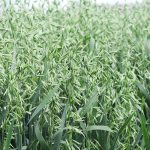
Falling prices ‘mow down’ crop revenue
CLANDEBOYE, Man. — Last year was the most expensive crop to ever be put in the ground on the Prairies. In 2024, farmers will spend less on fertilizer, diesel and other inputs, but costs haven’t fallen off a cliff, said Darren Bond, a farm management specialist with Manitoba Agriculture, “The crop this year … the […] Read more

FCC announces new 4R incentive
Farm Credit Canada is prepared to pay farmers up to $2,000 to adopt 4R nutrient management practices using AgExpert, it announced Jan. 10. “We see an opportunity to reward FCC customers who follow Fertilizer Canada’s 4R Nutrient Stewardship Program,” said FCC president Justine Hendricks in a news release. “Streamlining the data management and verification process […] Read more
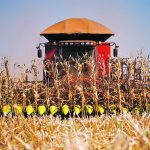
Global fertilizer supply chain hits another snag
Drought in Brazil prompts producers there to use less fertilizer, denting sales in an industry already facing challenges
SAO PAULO, Brazil (Reuters) — Brazil’s drought is causing farmers there to delay fertilizer purchases for their upcoming corn-planting season, denting sales for global fertilizer suppliers in the world’s top corn-exporting country, executives told Reuters. Brazil’s soybean harvest is already delayed and that hold-up may push back planting for the main corn season that follows […] Read more
Oats prefer side-banded nitrogen
WINNIPEG — Side-banding nitrogen and seed-placing phosphorus pays off for oat crops, new Saskatchewan research shows. “We’ve determined that side-banding nitrogen is better for oat yields,” Brianne McInnes, operations manager for the Northeast Agriculture Research Foundation, said in an interview at the Prairie Oat Growers Association annual convention. Side-banding rather than mid-row placement gave an […] Read more
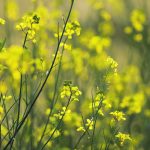
Mustard bio-fertilizer introduced to U.S. market
WINNIPEG — A Saskatoon company that specializes in bio-fertilizers and bio-controls is poised to expand into the United States. In November, the department of agriculture in Washington state granted a registration for a product called TerraSanteTM. MustGrow Biologics Corp. is the company behind TerraSante, a bio-fertility product that’s suited for high-value crops like potatoes, strawberries […] Read more
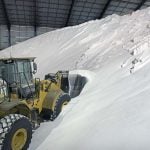
Urea forecast suggests short-term price declines, but recover later
SASKATOON — The short-term outlook for urea calls for falling prices but the medium-term forecast is the opposite, according to Argus Media. “Prices are coming under pressure,” Sophie Mason, manager of nitrogen analytics with the firm, said during a recent webinar. Limited demand is going to be the key market factor over the next couple […] Read more
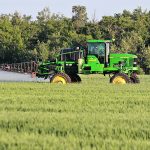
Nanoparticle-based foliar fertilizer
Vantage Ag president Paul Sinkevich is the first to acknowledge that if something seems too good to be true, it usually is. However, when it comes to the use of nanoparticles in foliar fertilizer applications, he said the proof of the pudding is in the eating. “We’re adding a process that gets the particle size […] Read more
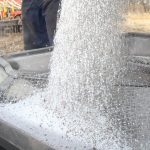
Research makes case for SuperU
Farmers have balked at cost of enhanced efficiency fertilizer, but reduced applications shown to work
David Rourke is committed to cutting greenhouse gas emissions from crop production. So much so, he’s working on a PhD thesis at the University of Manitoba, focusing on how Canadian grain farmers can help with the climate crisis. Nonetheless, Rourke doesn’t use enhanced efficiency fertilizers on his farm near Minto, Man. There’s a reason for […] Read more
Nutrien profit takes hit as potash prices fall
REUTERS — Nutrien fell short of analysts’ estimates for third-quarter profit, as lower potash prices weighed on the world’s biggest fertilizer producer. Potash prices have been falling after shipments from Belarus and Russia resumed. These exports had been significantly restricted last year following Western sanctions imposed on Russia in response to its invasion of Ukraine. […] Read more





